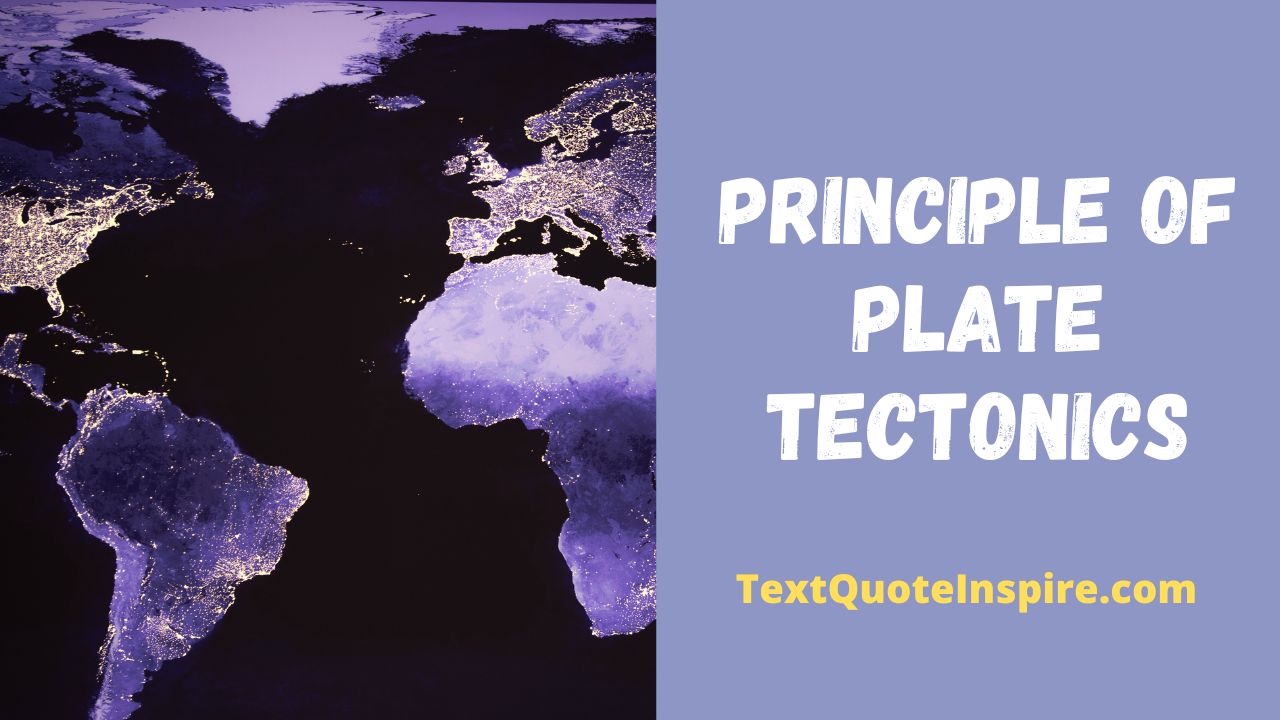Basic Concepts of Plate Tectonics
The concept of plate tectonics is based on the following three main assumptions:
(i) The ocean floor constantly expands, and a new oceanic crust forms at active ocean ridges, while its destruction occurs in craters.
(ii) The surface area of the Earth is constant, and the radius of the Earth has not increased by more than 56 km in the last 600 million years. From this, it can be inferred that the construction and destruction of the Earth’s surface are almost equal.
(iii) After the formation of new crust, it gets incorporated into a larger plate, which is generally formed by both continental and oceanic crust. Although some plates consist only of oceanic crust. The induction of one plate into another is called subduction. Plate deformation occurs at the edges rather than inside.
The different plates on Earth are moving with respect to each other, and the spheres are connected on the surface of the Earth. This means that the motion of all plates is interdependent, and a change in the direction or velocity of one plate is not possible without a concomitant change in the other plate.
Adjacent plate boundaries at mid-oceanic ridges are of the same type, but adjacent plate boundaries at the boundary of two plates may differ. There is no geometric restriction on the shape of a plate. It can have any form and any combination of boundaries at its limit. But the shape of the boundaries of the plates and their relative velocity should be such that there cannot be any change in the surface area of the Earth. If the area of two plates increases, then the area of the other plates should decrease, otherwise, the surface area of the Earth cannot remain constant.
Therefore, theoretically, some plates may collapse and transfer mid-oceanic ridges and deep-sea craters with respect to each other. Due to physical reasons, the destruction of a plate that includes the continental crust is never possible. Therefore, when the continental part of a plate comes near a crater or sink, there is a change in the motion or the relative motion between the two plate ends. A plate can be formed by joining two plates. When two continents come near each other from either side of a sink, folded mountain ranges are formed. This is how the Himalayan Mountains were formed.
Related-
- Describe the Concept of Normal Erosion Cycle Propounded by Davis.
- Explain the Concept of Plate Tectonics Related to Mountain Formation.
- Discuss Theories Related to the Origin of the Earth
- Write the Main Hypotheses Related to the Origin of the Earth.
Plate Tectonics and the Formation of Continental Crust and Mountains
When two continental plates collide, the denser plate is subducted, leading to the formation of mountains. The collision of the Eurasian and Indian plates resulted in the formation of the Himalayan Mountains as the Tethys Ocean was folded. Similarly, the Alps Mountains formed due to the collision of the European and African plates.
When oceanic and continental plates collide, the denser oceanic plate is subducted, leading to the formation of mountains such as the Rockies and Andes. Most earthquakes and volcanoes are found at plate boundaries. Deep-sea trenches are responsible for deep earthquakes, while mid-ocean ridges are formed by upwelling magma that solidifies to form new crust. The displacement of continents can also be explained by plate tectonics, with the Pacific Ocean continually shrinking due to the movement of the American Plate.
Deep oceanic trenches and fault lines in the North Atlantic Ocean are important evidence for plate tectonics. According to Harry Hess, the core and mantle of the Earth are heated by radioactive materials, resulting in convection currents. These currents rise and release magma from the mantle to form new crust at mid-ocean ridges, which solidifies to form plates.
Plate tectonics also explains the distribution of earthquakes and volcanoes. Most of these occur in narrow, discontinuous belts, which coincide with plate boundaries. The seismicity of ocean ridges, trench arc systems, and division zones all indicate plate boundaries. The Benioff Zone, named after seismologist Hugo Benioff, is a diagonal zone of earthquakes found near the poles of the Pacific Ocean, associated with the subduction of one plate beneath another.
Volcanoes are formed from magma that rises from the mantle to the surface. Destructive plate boundaries, where continental and oceanic plates collide, form continental volcanoes, while constructive plate boundaries, where two oceanic plates meet, form oceanic volcanoes. Most active volcanoes are found along mid-ocean ridges and are associated with constructive plate boundaries.
Basalt lava from volcanic shore volcanoes in the Pacific and Alpine mountain ranges has high silica content, while andesite rocks are found in most volcanoes, with 60% silica content.
